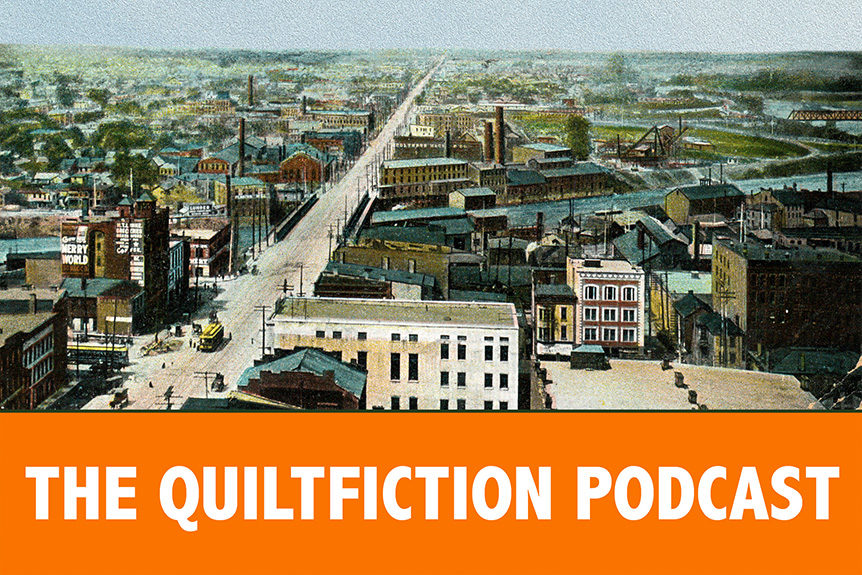We've covered the basics of marking stitching lines - see
my post and
Kristin's post. The most important thing to remember is to mark your stitching line such that it starts and ends 1/4'' from each edge.
With
stitching lines marked, let's cover the basics: the knot, the running stitch, and the back-stitch. My post will cover this in photos and Kristin has published a
wonderful video.
The Knot
We will be stitching with double strand thread in this tutorial. You could also work with a single strand of thread.
(Note - please use a neutral color for your thread. I've chosen black for better photos.)
Thread your needle with thread (50 wt or 80 wt) which is the length of your arm from elbow to finger tips . (Anything longer is just going to tangle.)
A simple knot is all you need - just make a loop at the end and pull through the thread tails. There are several other types of knots you could use as Kristen demonstrates
her video.
At the end of stitching, I typically pull my needle under the last stitch, make a loop and make a knot.
The Running Stitch
The basic running stitch is a line of small even stitches that run through your fabric without overlapping. To make a running stitch, push your needle from the front of your work and right back up to catch just a small about of fabric. Start right at the mark you made - 1/4'' from the edge.
(See tutorial for marking stitching lines.)
Continue taking one stitch at a time, working to get your stitches even. You can also pick up several stitches on your needle by rocking the needle in and out and using your left hand to push the fabric onto the needle.
You should try for 5 - 6 stitches per inch. With practice, your stitches will become reasonably uniform in size.
The Back-Stitch
The Back-Stitch is a very important stitch for hand piecing. A back-stitch should be added:
- at the beginning and end of a line of stitches to help secure the thread
- right before and right after sewing through a seam allowance (tutorial on this coming soon!)
- every 5-6 stitches to help keep proper tension
A running stitch moves forward across your stitching line. A back-stitch goes backwards! (I bet you figured that out!)
Start by making a single running stitch. Then, bring your needle back down through that first initial hole (or something right next to it) and then back up again as if you are making another running stitch.
And remember, back-stitching every 5-6 stitches in key for maintaining proper tension.
If you've never done a running stitch before, give it a try.
Don't forget to take a look at the
wonderful video Kristin from Simple Handmade Everyday made on the running stitch.
For more information on the QAL including catching up with any tutorials you've missed, please visit the main event page -
Hand Pieced QAL.
You can also j
oin our Hand Pieced Quilt Along Facebook Group and / or subscribe to our newsletter so you'll be among the first to know about new block tutorials.
Have a wonderful day!
Patty
















































